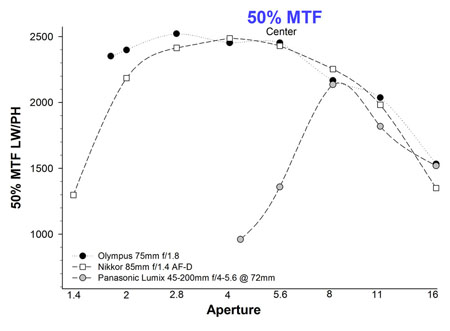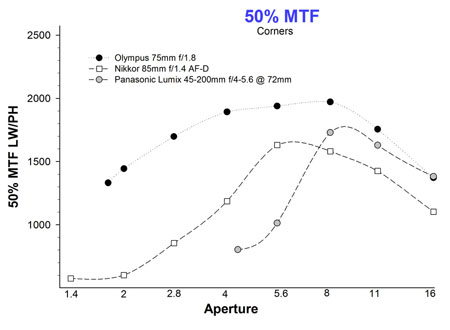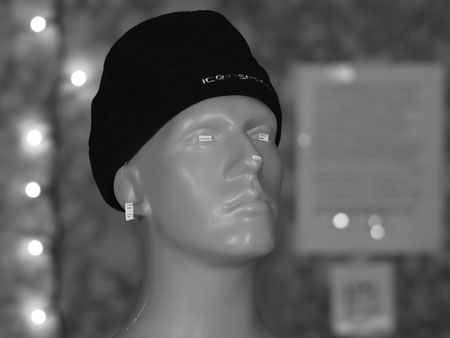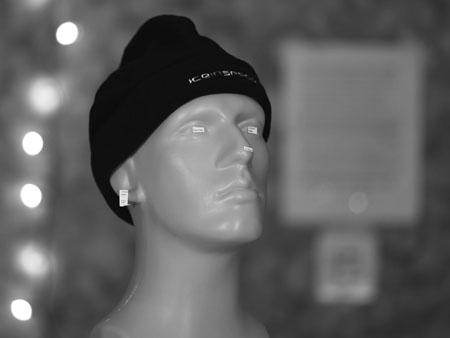Olympus 75mm f/1.8 Lens Performance Review
This review evaluates sharpness, bokeh and other photographic performance characteristics of the Olympus 75mm f/1.8 lens for micro four thirds cameras. This is a fast, medium telephoto lens that gives comparable perspective to that of a 150mm lens on a full frame DSLR camera. My interests were focused on using the lens in portrait style application and hand held photojournalist style shooting conditions under low light. I compared performance of the 75mm f/1.8 lens with a Panasonic 45-200mm f/4-5.6 lens at 78mm and with a Nikon Nikkor 85mm f/1.4 AF-D lens in manual focus mode mounted via an adapter. MTF50 values were determined to assess sharpness and an indoor scene was photographed to evaluate out of focus background blurring characteristics of point light sources and reflected light (bokeh). I also tested low light, low shutter speed performance using 4 camera bodies with variable in camera image stabilization capability. Finally, I compared bokeh performance of the lenses with a full frame DSLR camera using professional quality 135mm and 150mm lenses.
Lenses tested (size, weight and cost data):
- Olympus 75mm f/1.8
- Panasonic 45-200mm f/4-5.6
- Nikon Nikkor AF 85mm f/1.4 D (AF-D)
 Olympus 75mm f/1.8 |
 Panasonic 45-200mm f/4-5.6 |
|---|---|
 Nikon Nikkor AF 85mm f/1.4 D on adapter |
MTF50 Results
MTF50 performance was determined using Imatest Master v. 3.7 as described using a SFRplus Chart. A 13 region, center-weighted MTF50 value is posted below as well as center, midzonal, and corners lens performance. Regions of analysis on the SFRplus chart are described HERE. Data for light drop off (vignetting), chromatic aberration, and distortion are presented HERE. Two copies of the Panasonic 45-200mm lens were tested when low test results from the first copy suggested a problem. Details are HERE. The MTF charts below display the results from the best performing copy.
 Center-Weighted Average MTF50 |
 Center MTF50 |
 Midzonal MTF50 |
 Corner MTF50 |
Bokeh Tests
Bokeh (or boke) is a photographic term originating from Japanese photographers that refers to quality of blur or fuzziness of out of focus areas due to lens design. A number of lens design characteristics influence the quality of out of focus blur (online references: Merklinger , van Walree , Atkins and Carl Zeiss) including aperture (both f/stop setting and maximal lens opening size), aperture iris shape, and degree of spherical aberration correction. Out of focus light blur qualities influencing whether out of focus blur or blur disc are perceived as pleasant or unpleasant are influenced by size of the blur disc, eveness of blur disc illumination and blur shape.
The following images
to assess bokeh produced by the tested lenses were taken with out of focus backgrounds containing text as well as other objects with detail as well as point light sources and objects with specular (reflected) light. The lenses differed in the size and pattern of the point light sources in the out of focus background, the size and eveness of illumination of specular light in the background and overall blurring effect. As expected, the lens with the greatest f/stop aperture (i.e., Nikkor 85mm f/1.4 AF-D) gave the most pleasing background blur. However, the Olympus 75 was very close and produced more evenly illuminated out of focus blurred discs of specular light.
Low Shutter Speed Performance with Hand-Held Camera Bodies
My intention with the Olympus 75mm f/1.8 lens is to use it in low ambient light environments to photograph people. Camera bodies vary in their availability and the performance level of in body image stablization. I tested the Olympus 75 and Nikkor 85 with 4 camera bodies to see how low a shutter speed I could use and get sharp images while hand-holding the camera with my elbows supported on a table surface. A USAF1951 test target was set up 23 feet from the camera and lens under constant lighting. Ten photographs each were taken from 1/250 to 1/2 shutter speed with three Olympus cameras with in body image stabilization and one Panasonic body without image stabilization. Data are presented below.
Summary of Findings
Olympus 75mm f/1.8 lens
This lens is very sharp (high MTF50 scores) wide open throughout the image field. Bokeh is very good with even illumination of out of focus blur discs. Vignetting is manageable when the lens is wide open (1.2 EV) and is rapidly corrected by one stop aperture reduction. In portrait applications at 12 feet working distance, both eyes are adequately focused as well as other facial points to shoot the lens wide open. The OM-D E-M5 gave the best performance in low light, hand-held imaging because of its superior in body image stabilization to the other cameras tested.
Nikkor 85mm f/1.4 AF-D
This lens was tested because it is a very sharp, fast telephoto lens that is well matched with the performance needed for M43 sensors. Other medium telephoto Nikkor lenses I have tested give mediocre performance (e.g., 85mm f/2 AIS, 105mm f/2.5 AIS, 105mm f/1.8 AIS, 135mm f/2.8 AI). The Nikkor 85mm f/1.4 gave excellent MTF50 performance and provided the best background blurring. There was minimal peripheral banding in the out of focus blur disc of specular light.
Panasonic 45-200mm f/4-5.6 @ 72mm
This is an entry level, economy 4x zoom. This lens produced minimally sharp images. It was the lowest performer in MTF50, light drop off and bokeh tests. Lens copy to copy variation in performance was detected in tests.
Conclusions on the Olympus 75mm f/1.8 lens
It is difficult to write about this lens without using superlatives. It is incredibly sharp wide open across the image field and produces very high quality bokeh with evenly illuminated out of focus specular light. It can be shot wide open in portrait applications to produce sharply focused subjects and excellent background blurring.
posted 9 August 2012; Updated 19 August 2012.
© 2012, William L. Castleman




